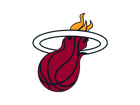Advertisement - scroll for more content
Jon Chepcevich: Devon Pryor is withdrawing from the 2025 NBA Draft and will suit up for the Oregon Ducks next season, I’m told.

LeBron James on tenure with Heat: Erik Spoelstra is the reason why we were better after my first year there
ClutchPoints: “[Erik Spoelstra] is the reason we were a better team after my first year… That summer he went to Oregon and learned the spread offense from Chip Kelly. And tried to figure out how to translate that to basketball.” —LeBron James🗣️ (via @mindthegamepod) pic.twitter.com/4jRXG5vE0l
“[Erik Spoelstra] is the reason we were a better team after my first year… That summer he went to Oregon and learned the spread offense from Chip Kelly. And tried to figure out how to translate that to basketball.”
— ClutchPoints (@ClutchPoints) April 2, 2024
—LeBron James🗣️
(via @mindthegamepod) pic.twitter.com/4jRXG5vE0l

Indiana sophomore center Kel'el Ware is entering the 2024 NBA draft. The move, announced via Ware's social media Tuesday, was widely expected as the Oregon transfer had a standout season for the Hoosiers, earning second-team All-Big Ten honors (media).
The origins of the 3-point line go all the way back to 1945. Howard Hobson, the famed Oregon coach who won the first NCAA tournament in 1939, conducted an experiment. He had Fordham play Columbia in an exhibition game, with a twist: He added a 3-point line. So on Feb. 7, 1945, a Fordham player named John Cahill unofficially hit “the world’s first 3-point field goal,” as a reporter wrote. Hobson, described as a “progressive young strategist,” had studied 23 games at Madison Square Garden during the 1944-45 season while stationed nearby with the Army. His observations convinced him that the game needed the 3-point line. Not only would it create excitement, but it would reintroduce the art of the “long shot” and, most important of all, ease the congestion and brutishness the game had taken on.
Oregon has become one of the NCAA’s sleeping giants in basketball. The reigning Pac-12 champions have developed and grown into one of the most talented teams in the country. And while they preach system basketball where no one individual player takes all the shots, they have a supreme talent in forward Dillon Brooks who’s helped carry the Ducks from good to great. Yet still, many NBA mock drafts have him barely listed in their top-60 due to “physical limitations” and other non-factors. “I don’t look at that stuff,” Brooks tells DIME in regards to mock drafts. “The way I see it, the NBA is going a different direction. They want power forwards who can handle the ball, score, and do a little bit of everything. So while that may make me positionless, I’m also role-less, meaning that I can play in any role.”
Advertisement

Ohio State players received a boost from one of their biggest, and arguably most famous, fans Saturday. Cleveland Cavaliers star LeBron James helped gift each member of the Ohio State team Beats By Dre headphones ahead of Monday night's College Football Playoff National Championship Presented by AT&T against the Oregon Ducks. James is a Beats By Dre spokesman and partner. Beats By Dre provided the headphones to the players, but James "helped facilitate the connection" between the company and the Buckeyes, an Ohio State spokesperson said.

The gift was not a violation of NCAA rules. "The headphones were donated to Ohio State and were distributed within permissible NCAA limitations on awards," the spokesperson said. Oregon players also received headphones from Beats By Dre on Saturday, a member of the team's traveling party told ESPN's Darren Rovell. The Ducks also had received them from the Pac-12 for playing in the conference championship game last month.

“Certainly I understand that it's our team success that allowed something like that to happen,” Spoelstra said to CSNNW.com. “I'm from Oregon so that means a lot. I still feel like an Oregonian. I hope they see me as an Oregonian. I grew up there and I still support all the Oregon athletics. “It was somewhat ironic that Chip Kelly and I shared that award because he has become a friend, but I'm also a big time Oregon Ducks fan. So that was kind of cool.”
Advertisement
Gang violence dissuaded Crawford from even going to school, much less playing. Clyde, who played with Stan Love (Kevin's dad) at Oregon and was a friend of Ahmad Rashad's, put up a basket in the backyard, a sanctuary for which Jamal would yearn. Crawford was 15 when he and his friend, Jalal Shams, were trying to catch a bus from a Dorsey High football game. They were approached by an older, more numerous group, and after some conversation Crawford watched Shams die of a gunshot to the head. Weird, indeed. "I was here when I was in the fourth and fifth grade, and then again when I was 13 until I was 16," Crawford said. "Just a lot of stuff going on. I wasn't focused like I should have been, on school and a lot of other stuff. I needed to get back to Seattle, where the rest of my family was. "It's a sad reality. I knew anything could happen at any moment. When I came back to Seattle my dad came the next year. It was just different there."
Advertisement
Advertisement
Advertisement
